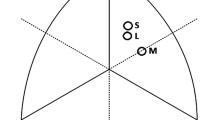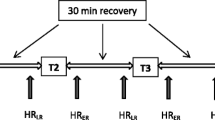Abstract
To perform excellently in international competitions, wrestlers have to achieve an excellent level of physical fitness and physical condition during training. This article reviews the physiological profiles of elite wrestlers. In general, successful wrestlers showed higher dynamic and isokinetic strength than unsuccessful wrestlers. In particular, upper body strength and anaerobic power were significantly different between the two groups.
Aerobic capacity is one of themost important physical factors to achieve good results in wrestling competitions. The maximal oxygen uptake of national and international wrestlers taking part in international competition has been shown to be about 53 to 56 ml/kg/min. Around the time of the Seoul Olympics, typical values for wrestlers were about 60 ml/kg/min, with values of >70 ml/kg/min in some cases (the latter being similar to values reported for some endurance runners). The flexibility of the wrestlers was found to be lower than that of weight lifters and gymnasts. However, the flexibility of top-level wrestlers was higher than that of lower level wrestlers. To fully understand the physiological profiles of successful wrestlers, further research regarding anaerobic and aerobic energy metabolism, cardiopulmonary responses, body fat content, and changes inmuscle hypertrophy both during the wrestling season and off-season is warranted.




Similar content being viewed by others
References
Sinning WE. Anthropometric estimation of body density and total body fat from skin fold measurements. Med Sci Sports 1978; 10 (4): 243–9
Schultz MP. The effect of an NCAA Division I wrestling season on selected physiological variables [thesis]. Provo (UT): Brigham Young University, 1997
Wilmore JH, Brown CH, Davis JA. Body physique and composition of the female distance runner. Ann N Y Acad Sci 1977; 301: 764–76
Horswill CA. Applied physiology of amateur wrestling. Sports Med 1992; 14 (2): 114–43
DeGaray AL, Levine L, Carter JEL. Genetic and anthropological studies of Olympic athletes. New York (NY): Academic Press, 1974
Tcheng TK, Tipton CM. Iowa wrestling study: anthropometric measurements and the prediction of a ’minimal’ body weight for high school wrestlers. Med Sci Sports 1973; 5: 1–10
Cisar CJ, Johnson GO, Fry AC, et al. Preseason body composition, build, and strength as predictors of high school wrestling success. J Appl Sport Sci Res 1987; 1: 66–70
Song TMK, Garvie GT. Anthropometric, flexibility, strength, and physiological measures of Canadian wrestlers and comparison of Canadian and Japanese Olympic wrestlers. Can J Appl Sport Sci 1980; 5: 1–8
Silva JM, Schultz BB, Haslam RW, et al. A psycho-physiological assessment of elite wrestlers. Res Q Exerc Sport 1981; 52: 348–58
Stine G, Ratliff R, Shierman G, et al. Physical profile of the wrestlers at the 1977 NCAA Championships. Physician Sports-med 1979; 7 (11): 98–105
Lansky RC. Wrestling and Olympic-style lifts: in-season maintenance of power and anaerobic endurance. Strength Cond J 1999; 21 (3): 21–7
Yoon JR, Jun HS. A study on aerobic and anaerobic power of elite Korean National wrestlers. In: Kang HS, Kim KH, Kim KJ. Proceedings of the 1st Korea Exercise Academy Symposium, Korea Exercise Science Academy; 1990 Jun 30; Seoul. Seoul: Taegeun Press, 1990: 102–7
Horswill CA, Scott JR, Galea P. Comparison of maximum anaerobic power, maximum aerobic power, and skin fold thickness of elite and nonelite junior wrestlers. Int J Sports Med 1989; 10: 165–8
Inbar O, Bar-Or O. Anaerobic characteristics in male children and adolescents. Med Sci Sports Exerc 1986; 18 (3): 264–9
Tesch P, Karlsson J, Sjodin B. Muscle fiber type distribution in trained and untrained muscles of athletes. In: Komi PV, editor. Exercise and sport biology. Vol. 12. Champaign (IL): Human Kinetics, 1982: 79–83
Sharratt MT, Taylor AW, Song TM. A physiological profile of elite Canadian freestyle wrestlers. Can J Appl Sport Sci 1986; 11 (2): 100–5
Taylor AW, Brassard L, Proteau RD. A physiological profile of Canadian Greco-Roman wrestlers. Can J Appl Sport Sci 1979; 4: 131–4
Yoon JR, Bang DD, Jun HS. The development of sparring types for elite Korean national wrestlers. Korean J Sports Sci 1994; 5 (2): 15–24
Rankin JW, Ocel JV, Craft LL. Effect of weight loss and refeeding diet composition on anaerobic performance in wrestlers. Med Sci Sports Exerc. 1996 Oct;28 (10): 1292–9
Aschenbach WJ, Ocel L, Craft C, et al. Effect of oral sodium loading on high-intensity arm ergometry in college wrestlers. Med Sci Sports Exerc 2000; 32 (3): 669–75
Sharratt MT, Cipriano N. Physical/physiological testing in wrestling: rationale and application. Proceedings of the FILA 75th Anniversary Conference; 1987 Aug 23–25: Clermont
Kim CK. The study of development on KCK system for motion analysis in bear hug (ananumgigi). Korean Sports Sci Res 1995: 289–325
Clarke DH, Vaccaro P, Anderson NM. Physiological altercations in 7- to 9-year old boys following a season of competitive wrestling. Res Q Exerc Sport 1984; 55: 318–22
Seals DR, Mullin JP. VO2max in variable type exercise among well-trained upper body athletes. Res Q Exerc Sport 1982; 53: 58–63
Horswill CA, Park SH, Roemmich JN. Changes in the protein nutritional status of adolescent wrestlers. Med Sci Sports Exerc 1990; 22: 599–604
Gale JB, Flynn KW. Maximal oxygen consumption and relative body fat of high-ability wrestlers. Med Sci Sports 1974; 6: 232–4
Sharratt MT. Wrestling profile: symposium on profiling. Clin Sports Med 1984 Jan; 3 (1): 273–89
Rasch PF, Brandt JWA. Measurement of pulmonary function in United States freestyle wrestlers. Res Q 1959; 28: 279–87
Nagle FJ, Morgan WP, Hellickson RD, et al. Spotting success traits in Olympic contenders. Physician Sportsmed 1995; 3 (12): 31–4
Leighton JR. Flexibility characteristics of three specialised skill groups of champion athletes. Arch Phys Med Rehab 1959; 38: 580–3
Acknowledgements
The author wishes to thank the Korean national wrestlers and coaches for their participation in the data collection. The author also thanks Drs Song, Horswill and Kim for their help and suggestions during the preparation of the manuscript.
Author information
Authors and Affiliations
Corresponding author
Rights and permissions
About this article
Cite this article
Yoon, J. Physiological Profiles of Elite Senior Wrestlers. Sports Med 32, 225–233 (2002). https://doi.org/10.2165/00007256-200232040-00002
Published:
Issue Date:
DOI: https://doi.org/10.2165/00007256-200232040-00002




